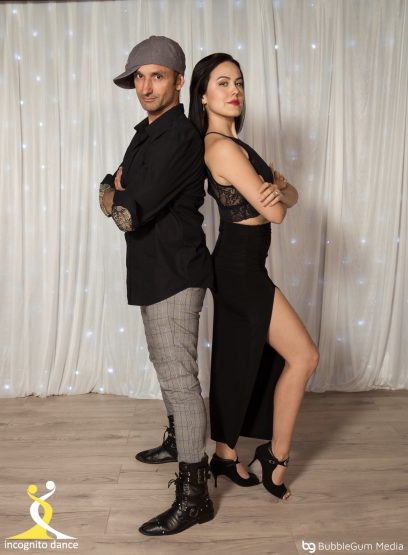The Basic Principles Of Dance San Francisco
Table of ContentsHow Dance San Francisco can Save You Time, Stress, and Money.Getting The Dance San Francisco To WorkDance San Francisco - An OverviewEverything about Dance San Francisco
Let's consider Salsa dance and music as a huge Tree that appears like this: Salsa is danced global while numerous technical aspects of the dance coincide throughout styles (6 actions over 8 beats danced on a quick-quick-slow or slow-quick-quick rhythm), there are several "characteristic" functions of the primary designs of Salsa that differentiate one from the other.Pairs joining a Gambling establishment Rueda dance all moves in unison as called by a Leader. Distinct features of Cuban design salsa are circular turn patterns (with "break back" actions on counts 1 and 5) as well as body language motivated by conventional Afro-Cuban folkloric dances. Distinct features of Cali style salsa fasts and intricate maneuvering, danced with a solid hand hold connection in between partners.
The origins of the design are a topic of dispute, but it is claimed that New York style Salsa dance originated in the 1960's due to the influx of Latin American emigrants after the Cuban Change (salsa dancing sf). Eddie Torres is one of the most popular New york city style professional dancer, being practically universally attributed with popularizing the style to dance centres beyond New york city
The standard rhythm of "On-2" is slow-quick-quick. The "youngest" of the designs of Salsa, L.A (https://www.mixcloud.com/dancesf/). Style (some individuals have actually called it "West Coast" design) came to be preferred in the 1990's and has its origins in ballroom (Mambo, Swing and Cha, Cha, Cha). Transform patterns lead and follow techniques are heavily affected by these styles, with the Cross Body Lead being the cornerstone of the design
The 2-Minute Rule for Dance San Francisco
Style are execution of turn patterns and numbers in the "port", with the break steps on counts "1" and "5". This style is likewise identified by expensive and often elaborate arm designing by the comply with to accent the "1" and "5" counts. The basic rhythm of "On-1" is quick-quick-slow. While Salsa music has strong origins in Cuban, Colombian and Puerto-Rican folkoric customs, it can not be marked down that all Afro-Latin and Latin American cultures have contributed to contemporary Salsa music as we understand it today.

There she became buddies with the Nuyorican musicians, and her collaborations with them and her time with the Fania All-Stars brought about over 50 cds (of collaborative and solo job). Thanks to the net and simplicity of access to details, the popularity of Salsa music, dancing and culture has actually spread like wildfire over the last 30 years and also then modern Salsa musicians proceed to pay homage to the Establishing Papas and Mom of Salsa.

The Basic Principles Of Dance San Francisco
differentiating qualities of Salsa songs are: Going Here 4/4 measure signature, Child Clave and Tumbao rhythms, Montuno Piano Unless you have a background in music, the above 3 qualities most likely suggest nothing to you. An easier way to explain Salsa songs is how it does NOT appear like other sorts of Latin American prominent songs.

It's time for lessons. With numerous workshops around and various designs to pick from, where does a complete novice begin? The majority of all new professional dancers choose to discover L.A. "On-1" style slotted Salsa styles are one of the most widespread in North America (with some exceptions of some metropolitan centres that still predominantly accept Cuban and Puerto Rican designs) and L.A.
.A. Style will swiftly instruct you the principles of Salsa timing, weight transfer and transform pattern execution. Numerous dancers, when they have actually had a year or more of dance L.A. Design Salsa under their belts, "button" to New york city style in order to diversify their dance vocabulary; however lots of professional dancers decide to stay with simply one design of Salsa and enjoy their time on the dancing floor in that certain design. salsa dancing sf.
Style and New York Style all being danced in the exact same club, with much of the dancers being able to switch over from one design to the other from one song to the following. salsa dancing sf. No issue which style you choose it's important to adhere to that design up until you're very comfy with the basics of timing, body rhythm and foundation move implementation prior to taking into consideration "changing" styles (if you wish to)
As soon as you begin on lessons be ready to devote time and energy to learning just how to dance in general it takes a full rookie (i. e., somebody with little or no dance experience) about 6 months of proactively taking lessons and going out and practicing at the very least two times a week to reach a factor where pattern execution begins to really feel "all-natural".